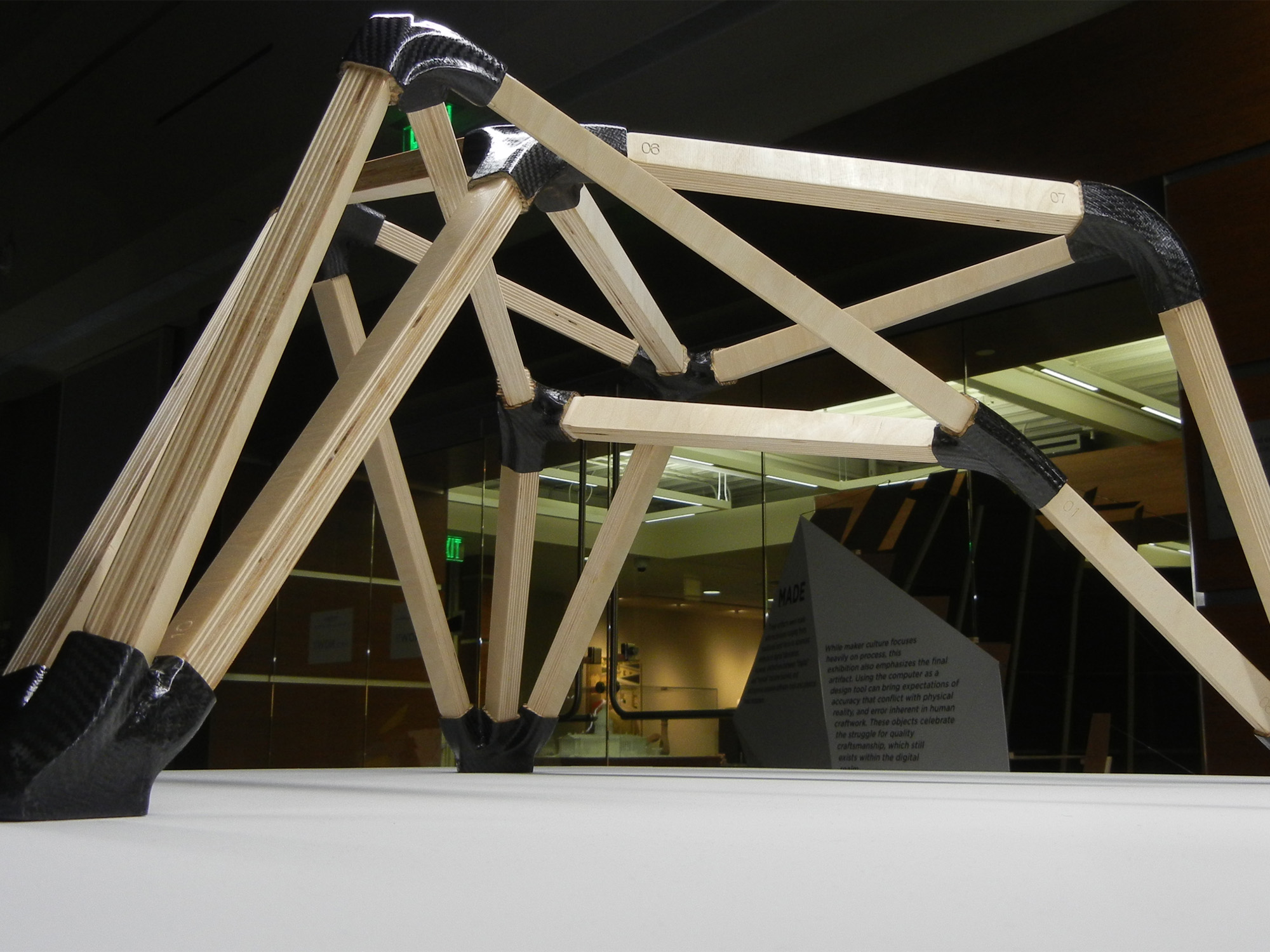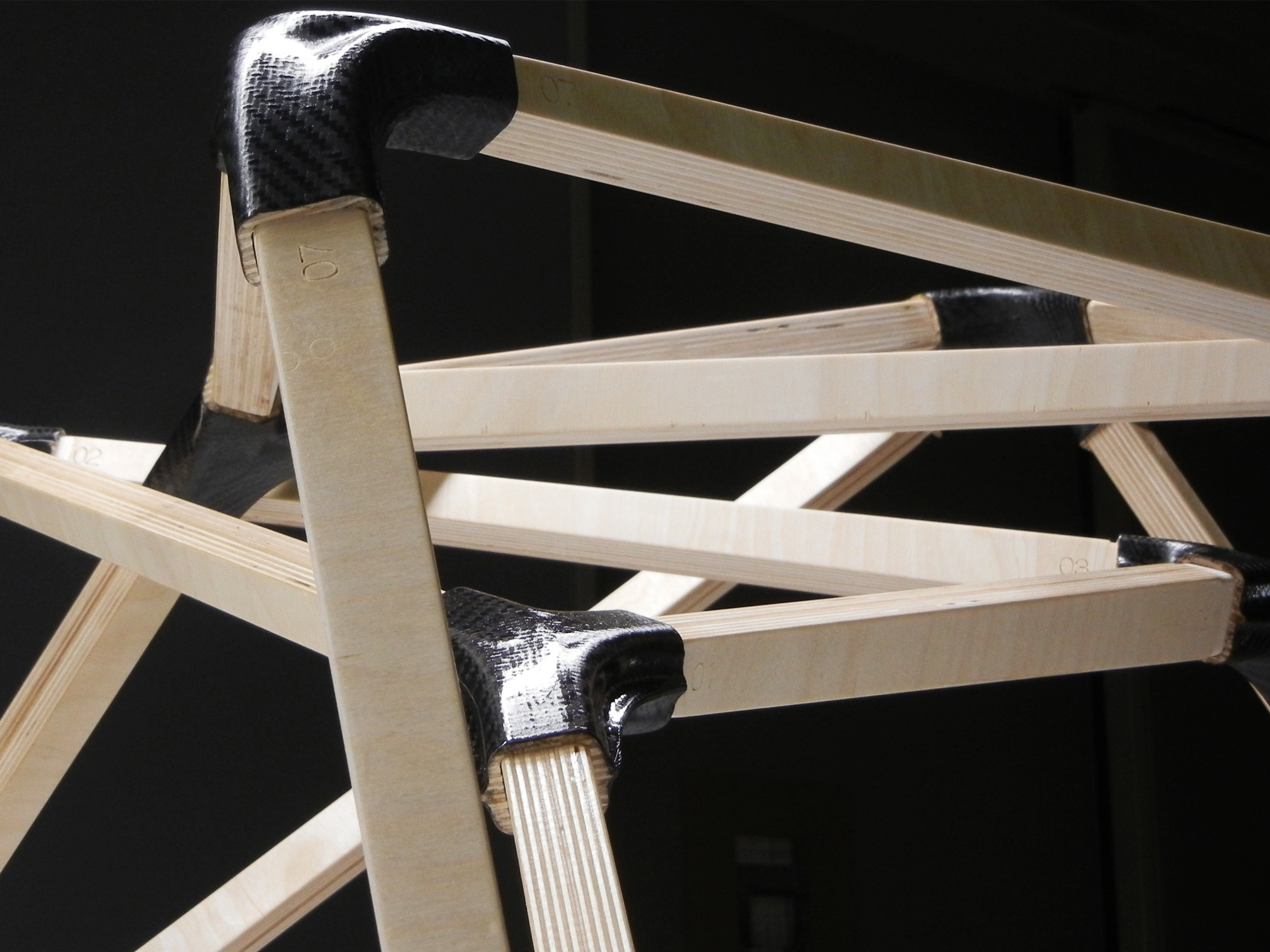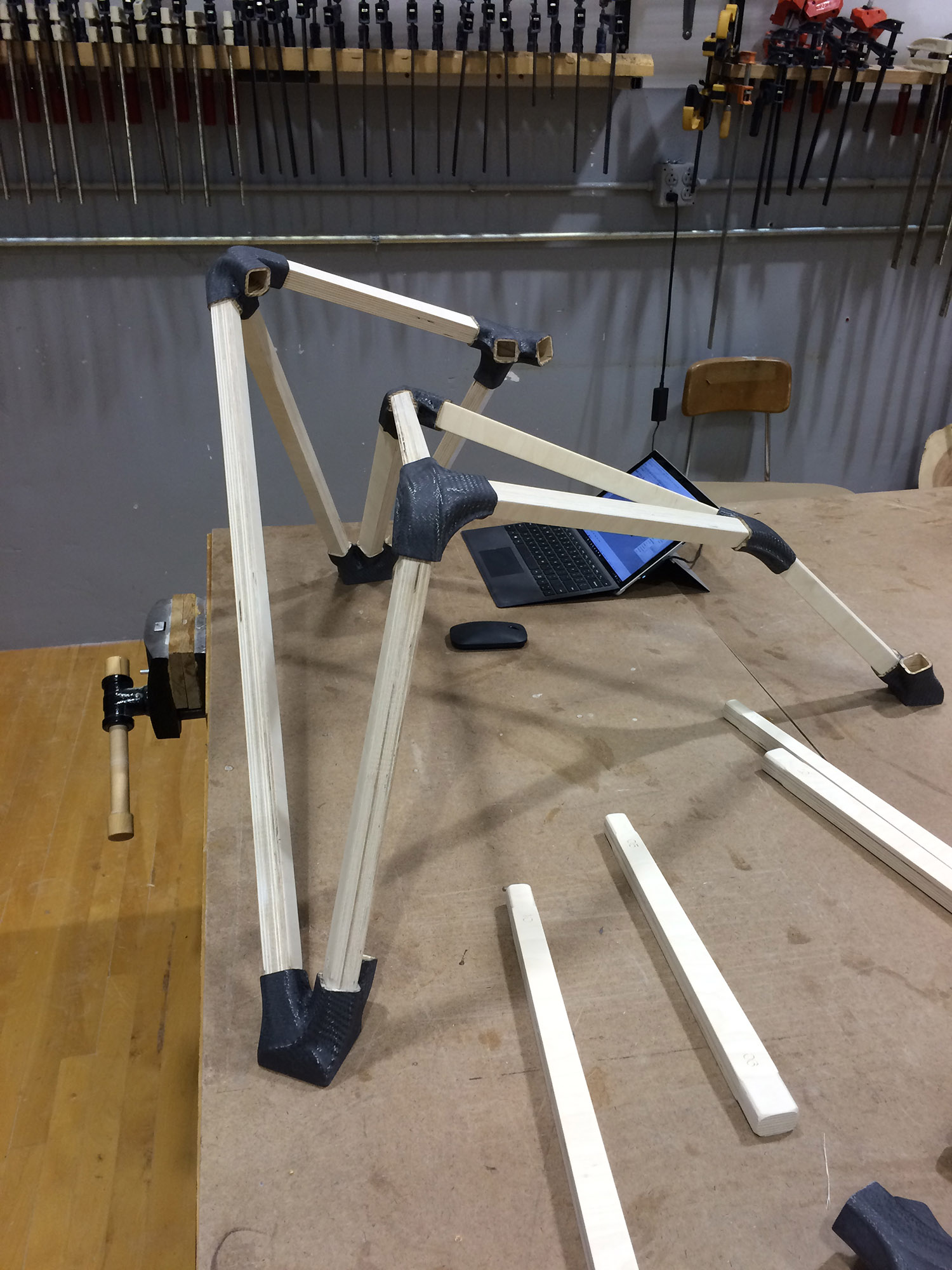carbon fiber joints
Academic research
University of Oklahoma
Spring, 2016
Carbon fiber cloth
Epoxy resin
Baltic birch plywood
Rhino3d
RhinoCAM
(Scroll down for image gallery)
This sculptural assembly was the outcome of experimentations using topology optimization software to generate structural frames. This software combines structural analysis with genetic algorithms to orient material in space so that it is structurally efficient. This results in complex angles at the nodes where individual struts intersect, and each node is unique. In traditional frame systems, angles are standardized, and the number of unique types of joints is minimized.
This sculpture focused on the development of a joinery system that allows for this wide range of geometric intersections that optimization generates, as well as expressing the overlapping visual flows between the multiple struts that enter each joint.
The design is a network of standardized wood strut members, each with a simple rectangular cross-section, but requires each of the ten intersection nodes to be unique. A process was developed to fabricate socketed joints from high strength carbon-fiber, laminated over CNC machined wood cores. These nodes can transmit compression, tensile, and moment forces between the wood struts.



















